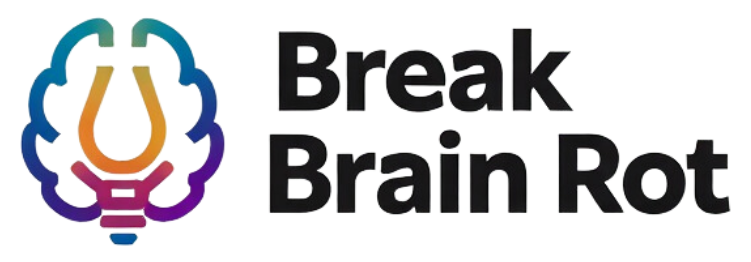We’ll break down the psychology of digital overload, discuss actionable detox methods, and share sustainable routines to help you maintain a healthy digital–physical balance. Whether you’re striving for productivity, inner peace, or stronger offline relationships, these proven strategies will guide you toward a more mindful digital life. (The Impact of Technology on Mental Health) (World Health Organization Study on Screen Time and Mental Health)
Table of Contents
- Understanding the Need for Digital Detox Strategies
- Preparing for a Successful Digital Detox
- Practical Digital Detox Techniques for Everyday Life
- Strengthening Your Mind and Environment
- Maintaining Balance After Your Detox
- Frequently Asked Questions
- Conclusion
Understanding the Need for Digital Detox Strategies
The Psychology Behind Digital Overload
Our brains are wired to seek novelty and reward—an effect amplified by constant pings, alerts, and updates. This endless cycle of stimulation affects attention span and increases anxiety. According to research from the American Psychological Association, heightened exposure to screens disrupts the ability to focus and can intensify stress levels.
Physical and Emotional Impacts of Screen Addiction
Prolonged screen time strains the eyes, interrupts sleep cycles, and reduces opportunities for physical activity. Emotionally, it can foster comparison and digital fatigue. To counteract these issues, focus on reducing late-night scrolling and improving sleep hygiene. (How Screen Time Impacts Sleep)
The Benefits of Disconnecting
Stepping away from screens restores cognitive energy and improves emotional regulation. Disconnecting enables deeper thinking, enhances interpersonal communication, and encourages creativity. In essence, effective digital detox strategies help balance stimulation with serenity.
Preparing for a Successful Digital Detox
Setting Realistic Goals and Boundaries
Before you start, identify your key digital triggers. Are you checking social media out of habit or necessity? Setting boundaries—like no-phone meals or screen-free mornings—gives your mind a much-needed reset. Track your usage with digital wellness tools to understand your consumption patterns.
Communicating Your Detox Plan
Let your circle know about your plan to minimize disruptions. Share your detox schedule with coworkers and friends, letting them know when and how you’ll be available. This communication keeps you accountable and sets clear expectations.
Creating a Supportive Environment
Transform your surroundings to reduce temptation. Designate spaces, such as your bedroom or dining area, as technology-free zones. Remove unnecessary gadgets and keep books, journals, or outdoor gear nearby instead. (Minimalism and Digital Decluttering Tips)
Practical Digital Detox Techniques for Everyday Life

Scheduling Screen-Free Hours
Start small by setting aside 30-minute blocks of screen-free time. Gradually extend those breaks throughout your day. The key is consistency—protect your mornings and evenings from digital distractions and instead enjoy mindful activities like stretching, journaling, or walking.
Embracing Offline Hobbies
Rediscover hobbies that ground you in the present. Painting, yoga, gardening, or reading can serve as rejuvenating substitutes for passive scrolling. Studies from the Mayo Clinic confirm that physical activity not only boosts endorphins but also reduces reliance on digital entertainment.
Using Tech to Limit Tech
Ironically, technology can help you detox from itself. Use “focus” modes, grayscale displays, or usage trackers to set healthy boundaries. Apps like Freedom, Forest, or Moment promote mindfulness by helping you measure progress toward balanced screen time.
Strengthening Your Mind and Environment
Mindfulness and Meditation Practices
Mindfulness strengthens the mental muscle that resists distraction. Daily meditation—even five minutes—can rewire your relationship with technology. Practices such as deep breathing or body scans reinforce your digital detox strategies by cultivating awareness and calm.
Redesigning Your Workspace for Focus
Cluttered digital and physical environments heighten stress. Simplify your workspace by minimizing open tabs and disabling non-essential notifications. Keep your phone out of view during deep work sessions to train focus. (Mindfulness-Based Stress Reduction Techniques)
Building a Long-Term Relationship with Technology
The goal isn’t to reject technology but to integrate it healthily. By aligning digital habits with your life purpose, you reshape tech from a distraction into a supportive tool. Create intentional tech rituals—like checking messages only at specific times—to sustain your balanced rhythm.
Maintaining Balance After Your Detox
Tracking Progress and Adjusting Habits
Use digital well-being reports or manual tracking to log screen time improvements. Reflect weekly on your energy and productivity levels. Adjust your strategies as life changes—sustainable habits evolve with awareness.
Setting Digital Boundaries in a Reconnected World
After your detox, reintroduce digital tools purposefully. Mute notifications and unfollow negative influences online. Develop a thoughtful reentry plan that keeps your mental space clear while allowing beneficial digital interactions.
Creating a Periodic Digital Reset Routine
Plan small detox breaks throughout the month—a social media-free Sunday, for instance. Over time, these resets maintain your mental equilibrium and reinforce mindful technology habits.
Frequently Asked Questions
How long should a digital detox last for noticeable results?
A digital detox can last a few hours or several weeks, depending on intensity. Even a 24-hour break can reduce stress and improve sleep quality. Longer detoxes deliver deeper changes in focus and self-awareness.
Can digital detox strategies improve sleep quality and focus?
Yes. Reducing screen exposure—especially before bed—helps regulate melatonin production and supports restorative sleep. With regular practice, these digital detox strategies enhance mental clarity and sustained concentration.
What are effective ways to manage work-related screen time?
Prioritize screen-heavy tasks during defined “digital work blocks” and take mindful breaks between them. Adjust display settings for comfort and practice keyboard shortcuts to reduce unnecessary interaction time.
How do I stay consistent with my digital detox habits?
Set reminders, recruit an accountability partner, and celebrate progress—no matter how small. Remember, consistency matters more than perfection when building new mindful technology habits.
Are there recommended tools for tracking digital activity?
Yes. Apps like Digital Wellbeing, RescueTime, or Screen Time provide insights into daily usage and highlight improvement areas. They encourage awareness and accountability in implementing digital detox techniques.
Conclusion
Mastering digital detox strategies isn’t about eliminating technology—it’s about reclaiming control. By practicing mindful use, setting clear boundaries, and engaging in screen-free activities, you create a healthier life balance. Start with small, consistent changes, and build toward a sustainable digital lifestyle that nurtures both productivity and peace.
Take a moment today to switch off your notifications, step outside, and experience the quiet clarity that comes from intentional disconnection. Your mind—and your relationships—will thank you. (Building Better Daily Routines for Productivity)

